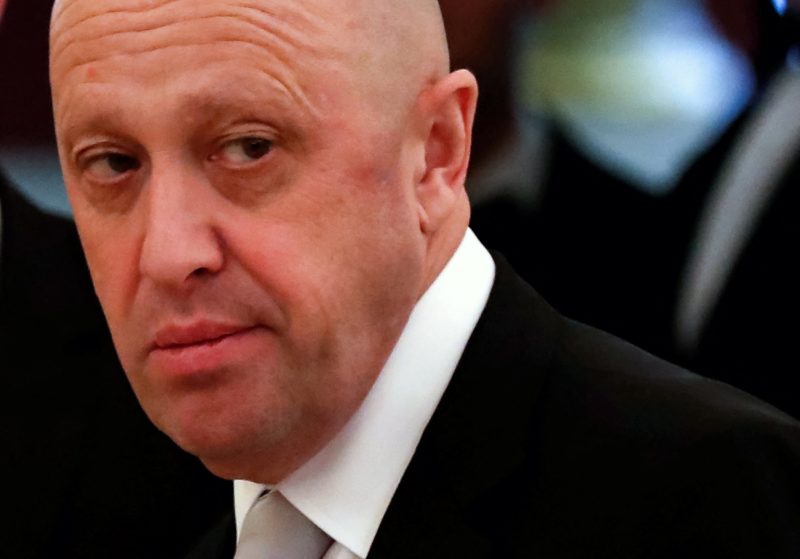Even as voters went to the polls in November 2016, there was strong evidence that Russia or Russian actors were hoping to influence the outcome.
In June of that year, The Washington Post reported on the hacking of the Democratic National Committee, an act attributed to Russian actors and which resulted in the leak of stolen documents the following month aimed at disrupting the Democratic convention. In August, the Daily Beast reported on a social media effort conducted by Russians that aimed to boost Donald Trump’s candidacy. Then, in October, a new set of leaks of material stolen from a top adviser to Hillary Clinton — a theft attributed to Russian hackers at the time.
Inside the government, the effort was recognized for what it was (though its efforts to halt the interference fell obviously short). For its part, the public only gained a sense of the full scale of the attempt to influence the election after it was over. Investigations, including that of special counsel Robert S. Mueller III, clearly connected the hacks to Russian intelligence. Social media companies like Twitter and Facebook produced examples of accounts and posts that had been part of the Russian influence effort.
Mueller’s probe also fleshed out details on the social media push. It was a function of the “Internet Research Agency,” a group funded by Yevgeniy Prigozhin, a close ally of Russian President Vladimir Putin (whom American intelligence had identified as explicitly authorizing the effort to interfere in the election). Prigozhin was indicted along with a number of employees for their efforts to create the social media content that had embarrassed Twitter and Facebook more than it had influenced voting.
Speaking to reporters in November, Prigozhin admitted his role in the effort.
“We interfered. We are interfering and we will interfere,” he said. “Carefully, precisely, surgically and in our own way, as we know how to do.”
“Are interfering” — as in, he and his team were attempting to influence the 2022 midterms, too. This was, at least per his self-interested presentation, an ongoing effort.
After that 2016 black eye, the social media companies had announced various tools for uprooting foreign influence efforts. In 2020 and 2022, they announced the cancellation of accounts believed to be linked to Russian interference efforts. Meanwhile the federal government, eager to prevent Russia from repeating its 2016 successes, worked with the companies to share information about what it was seeing.
That contributed to one of the most infamous moments of the 2020 election. In October of that year, the New York Post ran a story on material it claimed had been recovered from a laptop belonging to Joe Biden’s son Hunter. Even at the Post, the story raised eyebrows. Fox News reportedly passed on it. The conduit for the information was Rudy Giuliani, an attorney for Donald Trump who had no qualms about sharing dubiously sourced material, including from Russian actors. The FBI had been warning social media companies about 2016-style efforts to inject stolen information into the election; the laptop story very much carried that aroma. Twitter and Facebook briefly limited the story’s reach or its ability to be shared.
The effect was negligible. Trump was unpopular and lost to Biden handily in the presidential election. But then Trump decided to deny his loss, first on the grounds that the election had been stolen through fraud (which it demonstrably wasn’t) and, later, that it had been stolen through nefarious influence. This latter framing had the advantage of being unfalsifiable, so Trump’s allies ran with it.
An opportunity presented itself. Republicans who’d fostered hostility toward social media (in keeping with a liberal-elites-fighting-humble-American-patriots narrative) could try to argue that Twitter’s response to the laptop story had cost Trump the election. Such ideas have the effect of dropping a crystal into the supersaturated solution that is right-wing media so, in short order, a full conspiracy was built out around it. The right’s skepticism of the FBI (stoked by Trump, coincidentally, in an effort to downplay questions about his campaign’s connections to Russia) blended with cherry-picked documents released after Elon Musk’s purchase of Twitter to create a narrative about the FBI intentionally encouraging social media companies to silence Americans — or even paying them to do so, which they didn’t.
On Wednesday night, Rep. Jim Jordan (R-Ohio) hyped this line of rhetoric in an interview with Fox News’s Sean Hannity.
“The most important right we have as American citizens under the First Amendment is our right to speak, our right to communicate in a political fashion and not be attacked, harassed for doing so,” Jordan said, which of course isn’t what the First Amendment allows at all. But, he argued, this is what he suggested had happened: “We believe all of these big tech companies were working with big government to suppress free speech, to suppress Americans’ right to communicate on these platforms, which are now, in essence, the public square.”
A lot has been written about the difference between the government preventing people from speaking (a violation of the First Amendment) and Twitter’s preventing people from posting (a decision within the rights of a private business) so there’s little point rehashing it. But notice that the claim itself is unsupported. The FBI didn’t work to “suppress free speech,” it and other law enforcement organizations provided information to tech companies about potential foreign threats in an effort to prevent a repeat of 2016. And they were doing this at a time when Russia was actively trying to repeat what it did in 2016, as Prigozhin admitted. (His November comments were first reported in the United States this week.)
Where’s Jordan’s evidence for his presentation of events? Well, he doesn’t have any.
“That’s what we believe happened,” he told Hannity. “We’re looking for the, uh — looking for the evidence.”
A bit later, he offered more in support of why he purports to believe this is what happened.
“It wasn’t just the FBI. It was several government agencies, part of this Foreign Intelligence Task Force who were meeting not just with Twitter, but with all these platforms,” he explained. “And they met weekly in the run-up to the 2020 election. And they’ve continued to meet in the run-up to the 2022 midterms.”
You have to be pretty distant from reality to see this as supporting your conspiracy theory rather than undercutting it. The FBI was out to get Trump so … they met with social media companies in 2022? Which makes more sense: that the FBI and other agencies wanted to undercut Republican politicians so they had regular, reported meetings with Twitter and Facebook to plan how to do that — or that they were working together in an effort to limit the ability of foreign actors to influence elections, which the foreign actors had demonstrably done and have since admitted to continuing to try to do?
For Jordan, a lot of this is a game. He’s gained a lot of power by playing along with Trump even when Trump didn’t uphold his end of the bargain. Jordan’s a regular in right-wing media, where he makes sweeping pronouncements of nefariousness that don’t hold up.
The reality is simple and unexciting. Russia has tried to influence our elections, including through social media. The government and social media companies, caught flat-footed in 2016, worked together to fight the effort.
And Donald Trump lost in 2020 because he was less popular than Joe Biden.



























